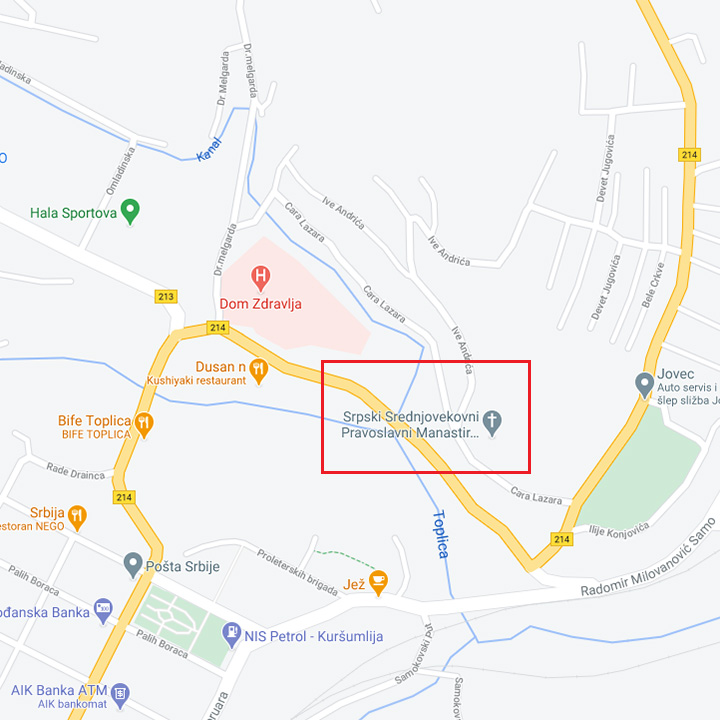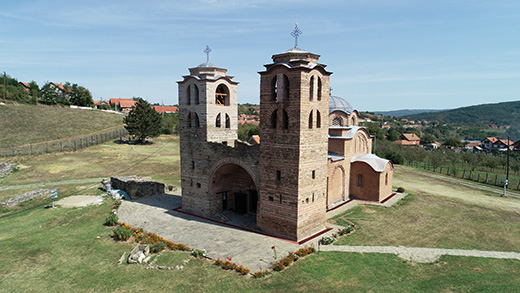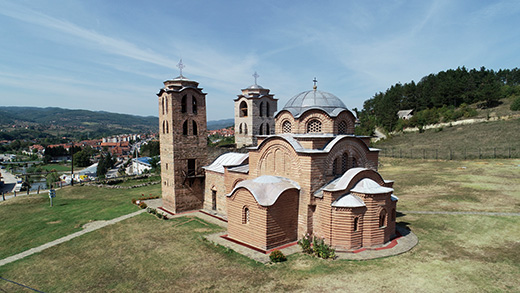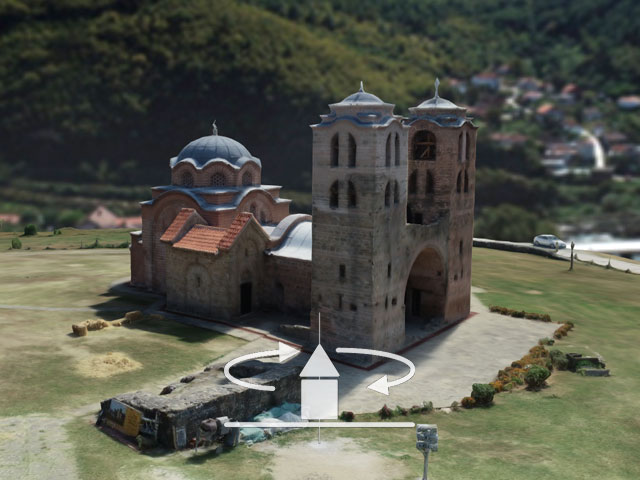St. Nikola Monastery
Protected cultural monument of special significance, listed as SK 207 with the Republic Institute for the protection of cultural monuments.
St. Nikola Monastery, Kuršumlija, Toplica county
Where is it located?
St. Nikola Monastery is located in Kuršumlija, on the outskirts of the town, high on the left bank of the Toplica river, over the estuary of the river Banjska into the Toplica.

Research and conservation
As early as 1910, National museum from Belgrade organized making of a canopy over the semi-collapsed church in order to protect it as much as possible.
Archaeological research in the churchyard of the monastery complex began in 1948, and intensified in the 70s and 80s of the XX century. Foundations of several edifices were discovered, as well as a part of all-encompassing rampart and several late-antique tombs testifying of the sanctity and age of the holy place where the church was erected in the XII century. The latest protective excavation in the churchyard was performed in 2012 by the Institute for the protection of cultural monuments from Nis. More than 850 graves were discovered in the churchyard of the monastery.
Conservation-restauration works were performed simultaneously with the research, the church was renewed, re-covered with lead slabs, the remains of the Episcopalian palace were conserved, as well as the foundations of the dining room and of the tower. The last conservation endeavor was the overbuilding of the northern bell tower in 2020.
Dating, history
The monastery church was built in XII century as the first endowment of Stefan Nemanja. Probably at the same time, Nemanja rebuilt the Byzantine triconch over the estuary of the Kosanica into the Toplica as the church dedicated to Holy Mother of God. Nemanja’s son, Stefan the First Crowned built the porch with two bell towers. King Milutin added a chapel on the northern side. Since the church dome was covered with lead that shone white in the sun, this place was named Bele Crkve (White Churches) after the two churches – St Nikola and Holy Mother of God.
Between 1219 and 1690, the monastery of St Nikola was the seat of Toplica diocese, one of the first 8 founded after the Serbian church gained its autocephaly.
Little is known about what happened to the church immediately after the Turkish conquests. The data from the defteler indicating that the church paid their taxes seems to confirm they were active. At the time when the traveler Evliya Çelebi passed through Toplica, in 1661, he mentions only one deserted church.
After the great migration of the Serbs in 1690, the monastery was neglected and the Turks removed the lead roof.

Description
Endowment of Stefan Nemanja, church dedicated to St Nikola, is a single-nave temple with a dome, with three-part altar space which is separated from the nave by an altar partition on two columns with vaulted arches.
Next to the southern wall there is an annex with a tomb, which the ktetor most probably intended for himself.
The church was built in brick, with heavy mortar rails going over alternate rows of brick, making thus the outer façade embossed and characteristic.
The dome is covered by a lead roof, resembling the original roof covering.
The inside of the church receives the light through bifora windows with glass oculi.
Byzantine influence can be seen in the way in which the temple was built, but there are also elements indicating the influence of the Romanesque style from the coast, which is in fact the announcement of the new Raška architectural style, of which the church of St Nikola is a precursor.

Painting
Only several smaller fragments of the frescoes in the window frames are preserved in the nave of the church. The frescoes in the southern tower’s chapel are very fragmentarily preserved; art historians date them to the XIII century. The figure of the Holy Mother of God is recognizable in the lowest zone. The characters of impressive dimensions unite the characteristics of Byzantine art with the latest stylistic direction of Serbian art of that period.
Julka Kuzmanović Cvetkovićarcheologist
